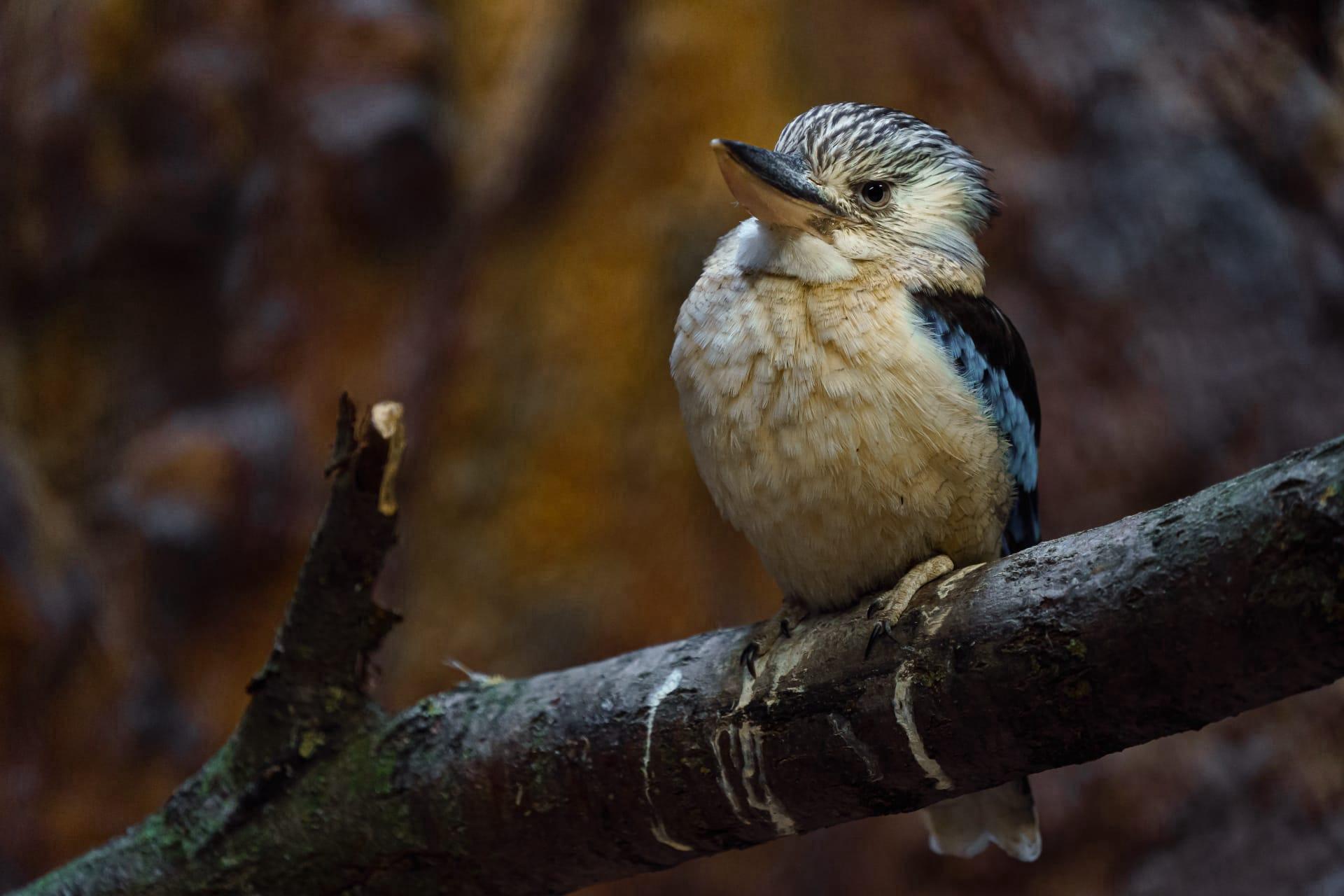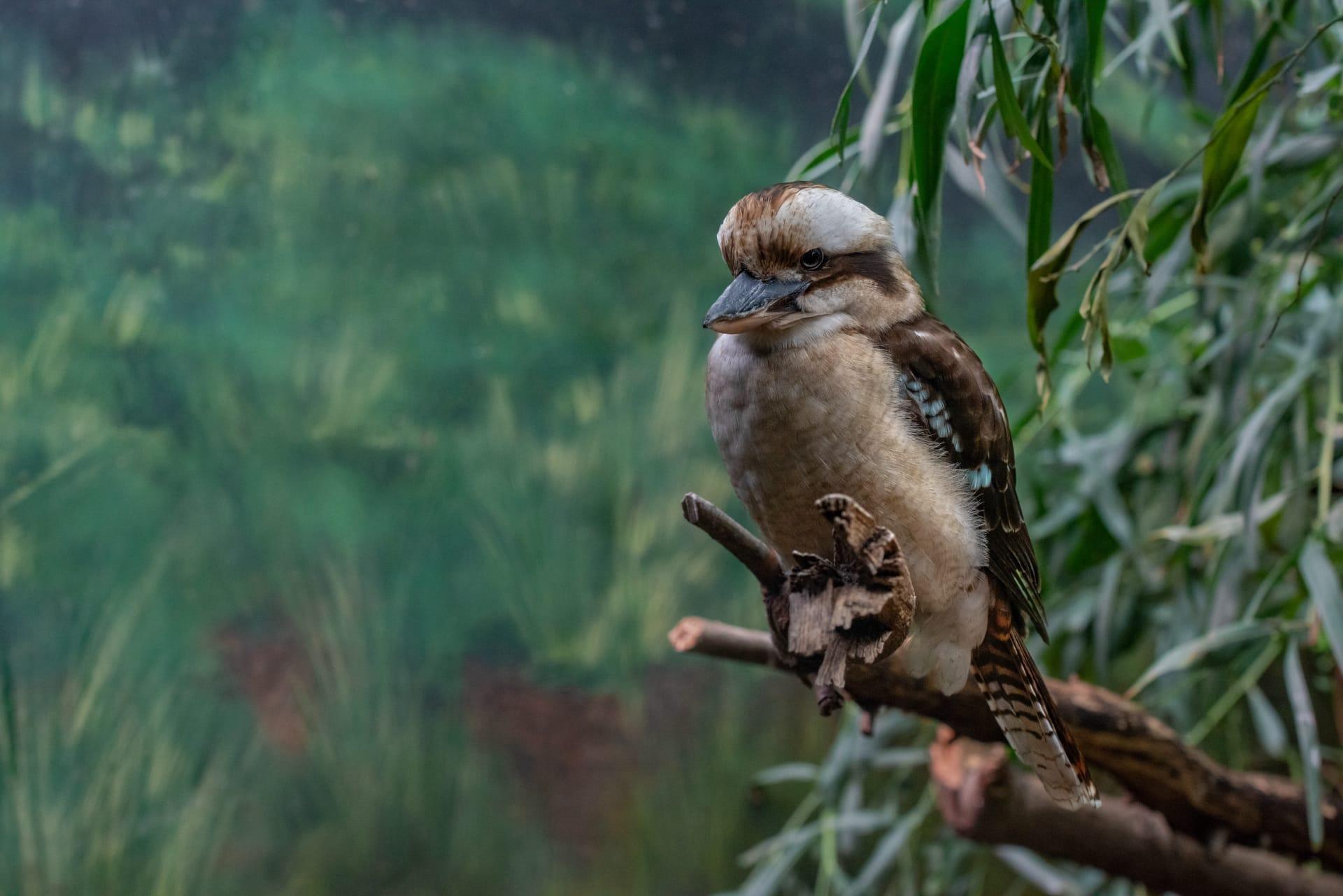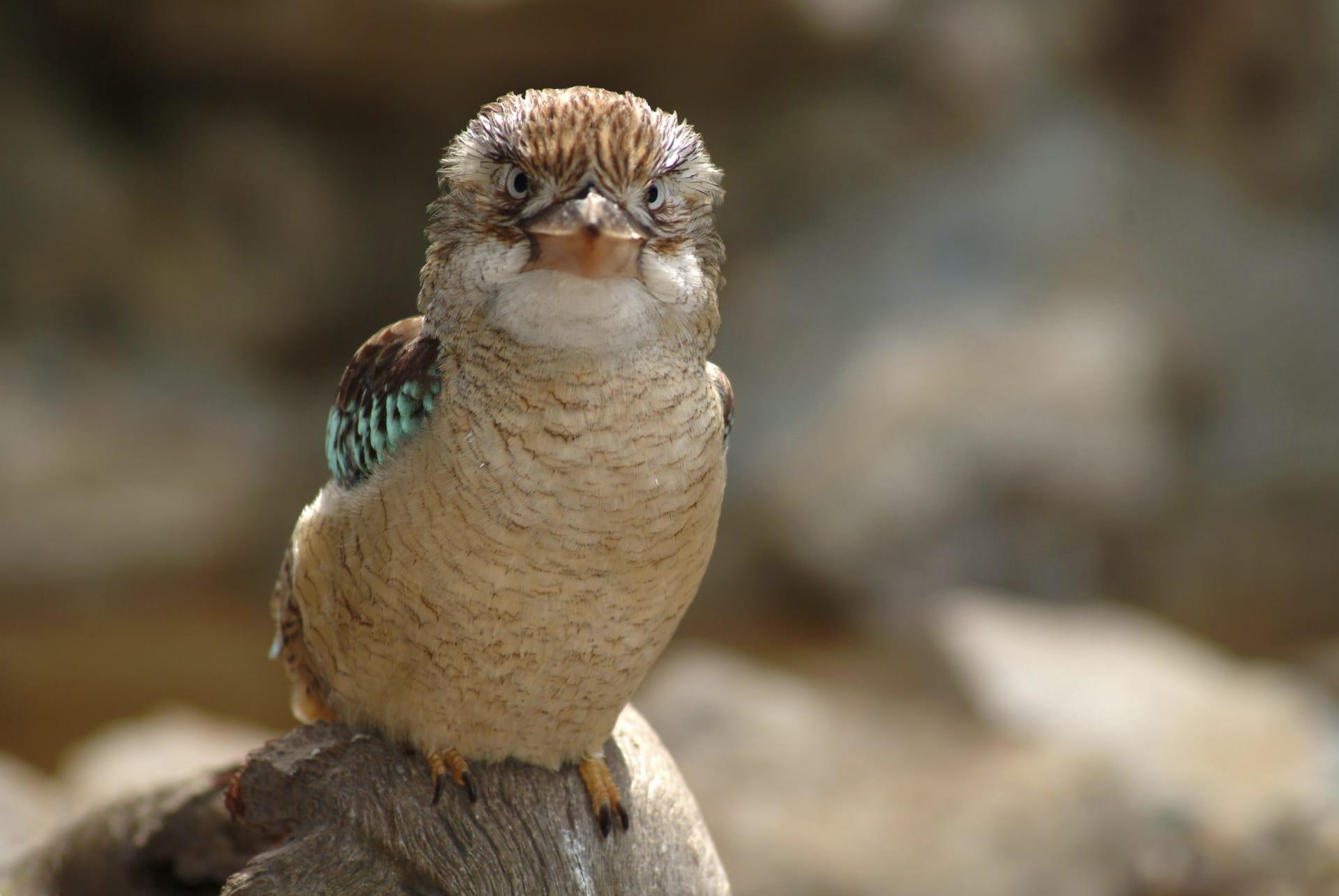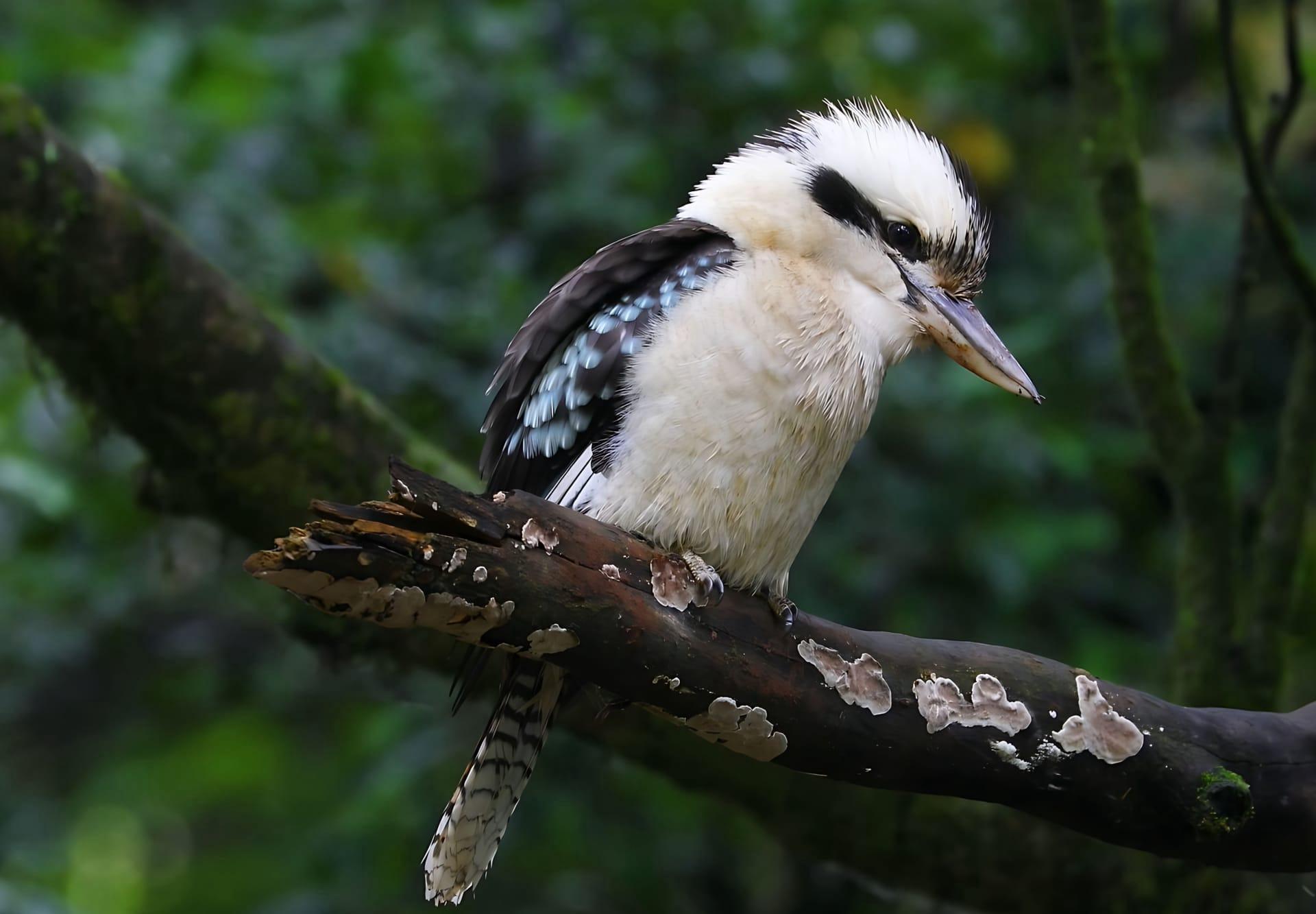Kookaburra Trivia
- Home /
- Trivia Question /
- Animal /
- Kookaburra Trivia
1
Question: What makes the kookaburra's laugh so unique and recognizable?
Answer: The kookaburra's laugh is a distinctive territorial call in the wild. It's a loud, cackling chuckle that can vary in duration, often starting and ending with a low chuckle and building into a raucous laugh. This laughter is usually heard at dawn and dusk, earning the bird the nickname "bushman's clock" in Australia. Interestingly, each family of kookaburras has its own unique laugh, which they use to establish and maintain their territory.
Question: How large can kookaburras grow, and what is their typical lifespan?
Answer: Kookaburras are among the largest members of the kingfisher family. They can grow up to 18 inches in length and weigh between 300 to 480 grams. These birds have a sturdy build with a large head, a prominent brown eye, and a very robust beak. In the wild, kookaburras typically live for about 15 to 20 years, but in captivity, they can live up to 25 years with proper care.

2
Question: Do kookaburras only eat snakes, as is commonly believed?
Answer: Contrary to popular belief, kookaburras have a varied diet that is not limited to snakes. They are carnivorous birds and feed on a wide range of prey including small mammals like mice, insects, worms, and crustaceans. They are also known to eat small birds and their chicks. Their hunting technique is unique as they perch silently and pounce on their prey from above.
Question: Is it true that kookaburras mate for life?
Answer: Yes, kookaburras typically form monogamous pairs that mate for life. These pairs live in family groups and establish permanent territories, which they defend fiercely. The breeding pair is usually assisted by their offspring from previous seasons in raising the young. This cooperative breeding behavior is quite fascinating and not common among other bird species.

3
Question: How do kookaburras adapt to urban environments?
Answer: Kookaburras have adapted remarkably well to urban environments. They are often found in suburban gardens and parks where they can hunt for a variety of prey like insects and small vertebrates. Kookaburras have learned to utilize man-made structures as perching and nesting sites and are not shy of human presence. They sometimes even accept food directly from people, though feeding them is not recommended as it may disrupt their natural hunting instincts.
Question: What role do kookaburras play in their ecosystem?
Answer: Kookaburras play a vital role in their ecosystem as apex predators among birds in their habitat. By preying on a wide variety of small animals and insects, they help control the population of these species, thus maintaining a balanced ecosystem. Their loud calls also serve as a warning to other birds and animals about potential dangers, thereby playing a role in the communication network of the forest.

4
Question: What are the different species of kookaburras?
Answer: There are four known species of kookaburras: the Laughing Kookaburra, the Blue-winged Kookaburra, the Spangled Kookaburra, and the Rufous-bellied Kookaburra. The Laughing Kookaburra, easily the most famous, is known for its loud, echoing laugh. The Blue-winged and the Spangled Kookaburra are slightly smaller and have more prominent blue wing feathers. The Rufous-bellied Kookaburra is the least known and has a distinct rufous coloring on its belly.
Question: How do kookaburras care for their young?
Answer: Kookaburra parents are highly attentive to their chicks. They build their nests in tree hollows, where the female lays up to three eggs. Both parents, along with older siblings, participate in incubating the eggs and feeding the chicks. The young are born blind and featherless but grow rapidly. The family group helps in teaching the young to hunt and survive, ensuring a high survival rate for the fledglings.

5
Question: Can kookaburras mimic other sounds?
Answer: Kookaburras are known for their ability to mimic a variety of sounds. Apart from their iconic laughing call, they can imitate the calls of other birds and even some human-made sounds. This mimicry is thought to be a territorial behavior or a way to confuse both predators and prey.
Question: How do kookaburras contribute to Aboriginal culture?
Answer: In Australian Aboriginal culture, kookaburras hold significant symbolic value. They are often depicted in stories, songs, and art as symbols of laughter, happiness, and family unity. Aboriginal folklore also regards the kookaburra's morning and evening calls as a signal to start and end the day, deeply embedding these birds in the cultural narrative.